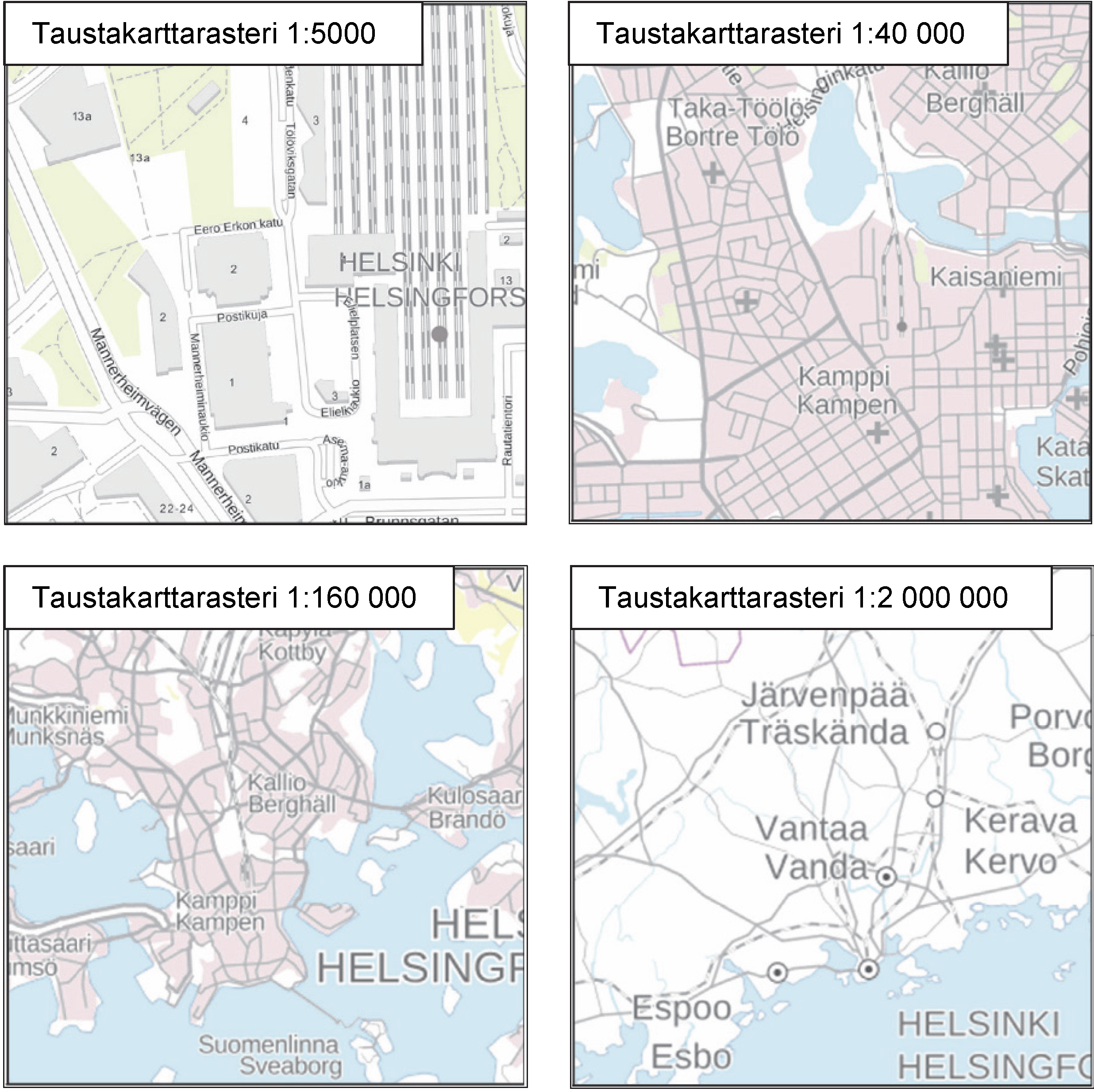5000
Type of resources
Available actions
Topics
Keywords
Contact for the resource
Provided by
Years
Formats
Representation types
Update frequencies
status
Scale
Resolution
-
Harvester Seasons is a service designed to help with estimating evolving trafficability conditions in forested terrain based on weather and model forecast information. The full service is currently provided for the geographical area of Finland.
-
-
-
-

The Background map is a dataset product series in raster format that depicts the whole of Finland and that is meant for web use as a background material for thematic data. Its key objects are road names, roads and railways, buildings and constructions, administrative borders, geographical names, waterways, land use and addresses of buildings (from Ryhti/Finnish Environment Institute). The product belongs to the open data of the National Land Survey of Finland.
-
Conditionality refers to the basic requirements that farmers' payments are conditional upon. Conditionality requirements are the baseline level for which you do not receive a separate payment. Aid is only granted for activities that go beyond the conditionality requirements. Conditionality consists of GAEC, statutory management requirements and social conditionality. Statutory management requirements relate to environmental issues, public health, i.e. food and feed safety, plant health and animal health and welfare. All conditionality requirements are described in this guide. When you apply for farmer payments, you agree to comply with the conditionality requirements. A landscape feature can be a tree, group of trees, transplanted block or other similar natural feature that is protected for its beauty, rarity, landscape significance, scientific value or other similar reason. Qualifying landscape features are sites protected under Article 95 of the Nature Conservation Act (9/2023) and located within a base parcel, on the periphery of a base parcel or in the area between adjacent base parcels. Protected sites must always be preserved and must not be damaged or removed. If a protected landscape feature is located on an area of 0,2 ha or less, it may be included in the area of the base parcel. If you wish to include a protected site in the eligible area, please declare the sites on the Food Agency's form 442 when applying for arable aid. The area of a landscape feature will only become part of the eligible area of the base parcel in the year following the submission of the declaration. Who makes conservation decisions on sites? If the site to be protected is located on private land, the decision to protect the site is taken by the municipality's environmental protection authority. The municipality is also responsible for marking the site on the land. On private land, protection is only granted on application or with the consent of the landowner. On application by the owner or on a proposal from the ELY Centre, the municipality may terminate the protection of a landscape feature if there are no longer grounds for protecting it or if the protection prevents the implementation of a project or plan of public interest. The application must be accompanied by the opinion of the ELY Centre. If the matter has been initiated on the basis of a proposal from the ELY Centre, the owner of the site must be given the opportunity to be heard. For more information: https://www.ruokavirasto.fi/tuet/maatalous/perusehdot/ehdollisuus/ehdollisuuden-opas/ehdollisuuden-opas-2025/
-

Grid net for statistics 5 km x 5 km covers whole of Finland. The grid net includes all grid cells in Finland. The location reference of a grid cell is the coordinates of the bottom left corner of each grid cell. An identifier in accordance with national conventions (consecutive numbering) has also been produced for each grid cell. The Grid net for statistics 5 km x 5 km is the area division used in the production of statistics by 5 km x 5 km grid cells. For utilizing grid data auxiliary table of regional classifications are available: https://www.stat.fi/org/avoindata/paikkatietoaineistot/tilastoruudukko_5km_en.html. The general Terms of Use must be observed when using the data: https://tilastokeskus.fi/org/lainsaadanto/copyright_en.html. In addition to the national version, an INSPIRE information product is also available from the data.
-
Maanmittauslaitoksen KM2-korkeusmallin kanssa yhteensopiva korkeusmalli, jossa alkuperäisiä korkeusarvoja on alennettu erityisesti virtavesikohteiden (viivamaiset sekä aluemaiset) ja tieverkoston risteyskohdissa. Alennetut korkeusarvot pyrkivät kuvaamaan virtausreittejä, kuten tierumpuja ja putkia, joita alkuperäisessä KM2:ssa ei ole. Aineisto on tuotettu yhdistämällä useita eri valtakunnan kattavia lähtöaineistoja, joita ovat - korkeusmalli KM2 (Maanmittauslaitos) - Siltojen kansien korkeudet (Syke) - Maastotietokanta (Maanmittauslaitos) - DIGIROAD-tieverkosto (Väylävirasto) - Rumpurekisteri (Väylävirasto) Lisäksi jotkin kunnat ja kaupungit ovat digitoineet Maastotietokannasta puuttuvia virtausreittejä. Korkeusarvot ovat ilmoitettu N2000-korkeusjärjestelmässä. Aineisto on avoin (lisenssi CC BY 4.0). Käyttötarkoitus: Korvaamalla KM2:n korkeusarvot uomakorjausaineiston arvoilla saadaan korkeusmalli, joka soveltuu mm. pintaveden virtauksen mallinnukseen alkuperäistä korkeusmallia paremmin. Tämä mahdollistaa esim. hulevesitulvariskien luotettavamman arvioinnin. Aineisto kuuluu SYKEn avoimiin aineistoihin (CC BY 4.0). Lähde: Syke, Maanmittauslaitos (perustuu Syken, MML:n ja Väyläviraston aineistoihin).
-
-
 Paikkatietohakemisto
Paikkatietohakemisto